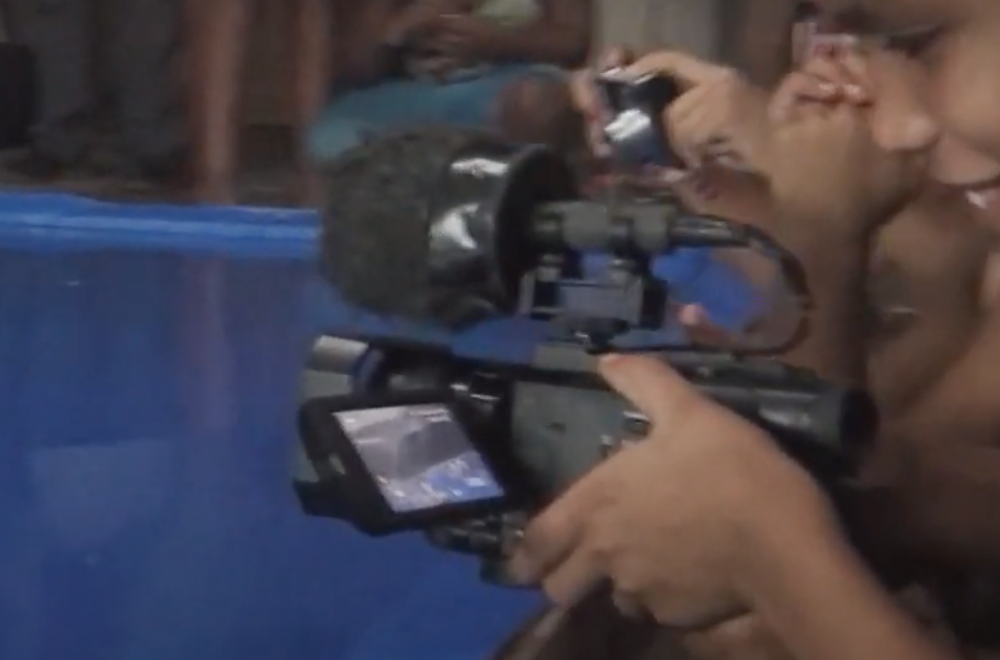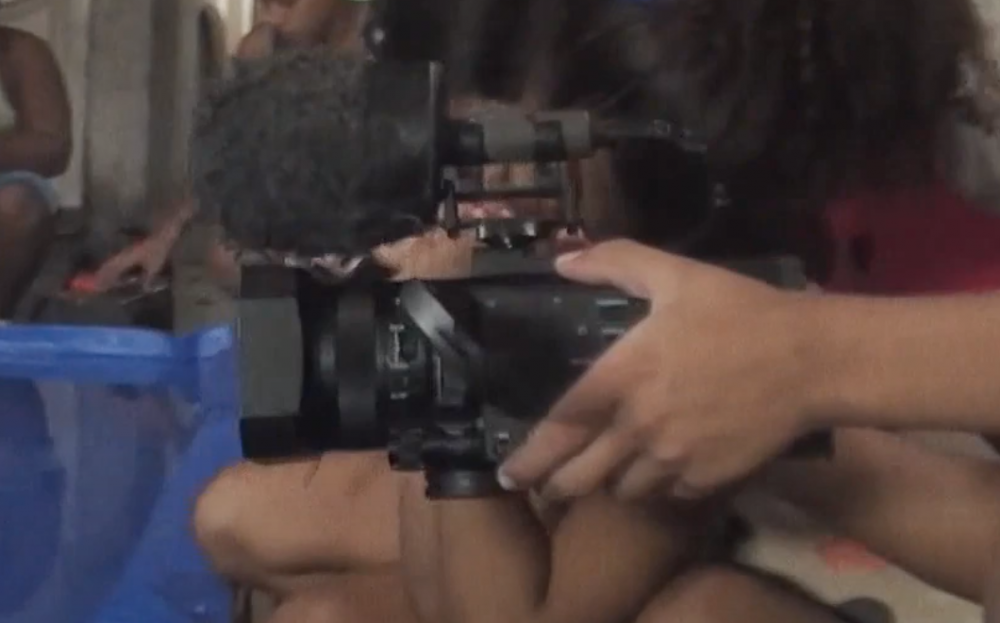-
Posts
5,964 -
Joined
-
Last visited
Content Type
Profiles
Forums
Articles
Everything posted by BTM_Pix
-
Panasonic have had to go hard on this today to wrestle control of YouTube back from this week' dominant content on there. I'm referring of course to the historic event of Hanna&Kotaro going to visit Aty for the first time. The merging of two of the major otter franchises has been massive and I for one am there for it.
-
It is reminiscent of the amount of exceptions in "What Have The Romans Ever Done For Us?" !
-
There are now L mount adapters for pretty much all lenses, including PL amd medium format speedboosters. For EF, Sigma do the MC21 adapter but the new one on the block that is of particular interest is the Fotodiox one which also has an integral variable ND in the mount. For anyone with a lot of EF glass, thats an attractive option as it turns the L mount cameras into the mythical true hybrid with ND. How good the AF is with the adapter is unknown to me though. I'm going to get one for my fp to find out.
-
I'm just on the phone with Shill-U-Like arranging the flights and accommodation for Hawaii for their top 20 influencers so I'll let you know as soon as the date is fixed.
-
Thanks for the heads up. I'm guessing it must something specific to Portkeys because I've just tested that lens (presuming it's the Panaleica one) with the PBC in combination with both the Nucleus Nano and the AFX and focus control is fine with v6.9.6 It wasn't working when I first put the lens on to test it but in my defence have you seen how small the AF/MF switch is on that lens and how difficult it is to see its in the MF position when you haven't had a coffee 🙂
-
In his case, after his Barnard Castle escapade, it should probably stand for Observable Ophthalmic Deficiency Analysis.
-

Fuji GFX100 Review – the ‘mini Alexa 65’ goes to a Formula One test session
BTM_Pix replied to Andrew Reid's topic in Cameras
No, it was Vettel. -
There is a massive difference between marketing and unregulated marketing. Not just in terms of the accountability for accuracy but also, in the case of marketing content posing as editorial, for the disclosure of its funding source and so by extension its impartiality. A very alarming trend from the UK Government over the past year is to "market" its message through newspaper's websites such as The Daily Mail with articles such as this one that support its position on an issue (in this case sending kids back to school) and on the face of it these would appear to be genuine news stories. Its been shared 271 times from this source alone - which would mean its exponential reach is many multiples of that by now- and I would be willing to bet that those sharing it or those having it shared to have either not noticed the small "Sponsored" tag or chosen not to care because it supports this position too. Now, I think its absolutely horrendous, though not surprising given the cast of characters, that the actual Government is using advertorial practices like this to push its messages. However, despite it being deeply unpalatable, it is nonetheless still subject to real enforceable regulation so the "Sponsored" tag has to appear on the link to the "story" and the funding source stated in the introduction to the piece itself. So, when YouTube videos are regulated in the same way and that regulation is as rigidly enforced as it would be with traditional media then we can talk about it being marketing in the same way but not until then, however well meaning and seemingly "transparent" some content providers are about it. If you put up some content on YouTube with copyrighted music then you'll know about it before its even finished processing because there is a direct financial interest involved in policing that and it can be automated. With, at the last time I checked, somewhere in the order of 400-500 hours of new content being uploaded to YouTube every minute there just isn't the technology or manpower available to interpret what is and isn't sponsored content so it relies on an honesty system from the creator and a policing system driven by users reporting it. Considering the whole aim of advertorial is to make an advert look exactly like editorial, then its not difficult to see how an unscrupulous creator could exploit the system and as the unwritten rule of advertorial is on some level to dupe the consumer of it why no viewers would have known it had happened and therefore report it. I don't think people have any problem whatsoever with watching content that has an ad break in it. The real problem is when people are unaware that they're watching an ad that has a content break in it.
-
Olympus pro range of MFT lenses have it and some of the premium ones such as the 12mm f2.0 and 17mm f1.8.
-

Fuji GFX100 Review – the ‘mini Alexa 65’ goes to a Formula One test session
BTM_Pix replied to Andrew Reid's topic in Cameras
You'd have to ask Andrew as I only supplied a lens and some swearing to that video. Licensing is a real minefield, more often than not with different rights holders for the actual music and the particular recorded version of it you want to use and different rates depending on use type. YouTube do have some options to keep you legal and avoid takedowns on their platform so a guide like this is a good starting point. https://www.lifewire.com/legally-add-copyrighted-music-youtube-1616424 -
I think that is just to address BM's v6.9.5 firmware killing the general compatibility with Viltrox rather than adding the focus stuff. V6.9.5 was a bit of a nightmare as it also killed Bluetooth operation of the cameras but BM have now released v6.9.6 yesterday to resolve it so maybe Viltrox will now have to patch their fix to back to what it was ! Be good if you or anyone else who has one could have a quick test of it though as I get a lot of enquries about what adapter to get for my focus controllers so it would be good to offer a lower cost option than the Metabones.
-
One thing to bear in mind about the Viltrox adapters - unless they have upgraded their firmware recently ? - is that unlike the Metabones ones they don't support electronic focus control on the P4K. So, touch AF won't work for example and nor will any add on adapters that interface with the camera's focus control functions. Might not be relevant if you have no intention of using any sort of electronic focus control but worth bearing in mind if you do. If anyone does know if there have been any firmware updates from Viltrox recently to enable it though then please chime in about which models as I have a vested interest in knowing which ones they are !
-

Fuji GFX100 Review – the ‘mini Alexa 65’ goes to a Formula One test session
BTM_Pix replied to Andrew Reid's topic in Cameras
Though it was perhaps better known as Eating Trifles in most UK school dinner halls of the era. -

Fuji GFX100 Review – the ‘mini Alexa 65’ goes to a Formula One test session
BTM_Pix replied to Andrew Reid's topic in Cameras
"The Eton Rifles" by The Jam. -

Fuji GFX100 Review – the ‘mini Alexa 65’ goes to a Formula One test session
BTM_Pix replied to Andrew Reid's topic in Cameras
Some terribly cynical opportunism and profane language from whoever was stood near you when that Ferrari ran off the road there. -
So....considering how they did a cripple number on the $5K mirrorless to protect their cinema line it does beg the question what they will have done to an actual cinema camera at $6K to protect the ones above it. They might well surprise us but I'm guessing most people will be quietly humming this waiting for the answer to that as the press conference unfolds.
-
I thought so, which is why I was surprised at the $200 figure as its less than 100 in the, erm, "World Series" style denomination. There is absolutely no way that I will be doing do the same thing to buy a GFX100 in Tokyo for €3K less than it is in Madrid. Absolutely no way at all. Not until the immigration restrictions are lifted.
-
$200 US or Australian ? The Contour ShuttlePro v2 is only €90/$99US so it should be under $150 AUS, how much import duty are you paying over there 😉
-
You might want to look at one handed programmable keyboards designed for gamers too as they are relatively cheap (circa €25-35), have a lot more keys and have wrist wrests which makes them a bit more comfortable for long sessions. Plus, garish RGB lights of course !
-
Well compared to the BM controller they're not so its all relative 🙂 I use the jog/shuttle all the time (I even developed an interface to be able to use it with LumaFusion on the ipad) but I'm an old fart who grew up with that sort of interface from the tape days. With the jog/shuttle and its surrounding keys mapped for play/pause, mark in/out, insert to timeline, previous/next edit point and zoom in/out, I find it really fast to cut with. Its not just the mapping (as that can be done with anything) but its the way the keys are positioned around the jog/shuttle that makes it more intuitive and, as a consequence, faster for me personally.
-
When dinosaurs roamed the earth and I was starting off as a tape op, Beyer DT100s were all a boy needed and I used to wear them all day long. I use Audio Technica ATH-M50s now and I can still do fairly long stretches with them but the DT100s still edge it for me in terms of duration. I don't like the way either option messes up my bouffant though.
-
I think its a Sony AX100 (or one the variants as they have a few cameras that share the same shell) and the images themselves been flipped horizontally. Unless Sony have released a limited edition left handed version.
-
If you don't mind paying a bit more then you might want to look at something like the Delux T11. This video shows it is a real world comparison in Resolve versus using keyboard shortcuts. To be honest though, if you are looking to get a slice of the editing acceleration that the DaVinci edit controller gives you then I think you could do a lot worse than the Contour ShuttlePro v2. I think a lot of people have forgotten about it because its been out so long but it really does offer some good functionality. You can combine it with one of the cheap programmable keyboards if you like too and also do the same with the cheaper Contour ShuttleXPress if you just want the jog/shuttle wheel and a few programmable buttons.
-
Check your inbox in about 90 seconds 😉 We downloaded and tested it early this morning and all is good now.








